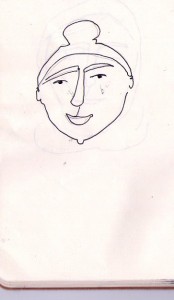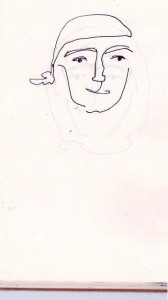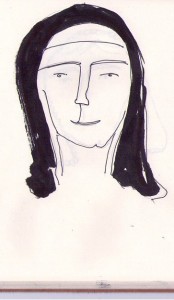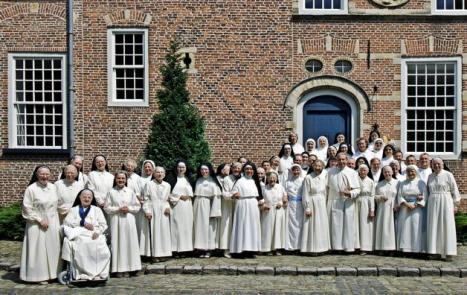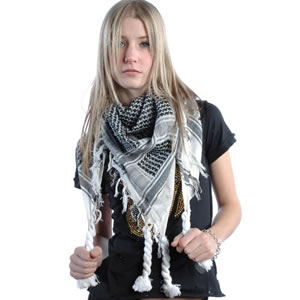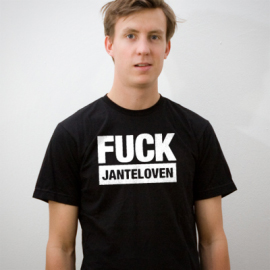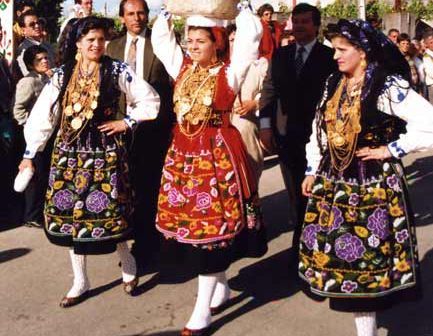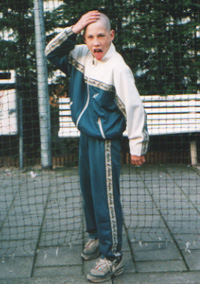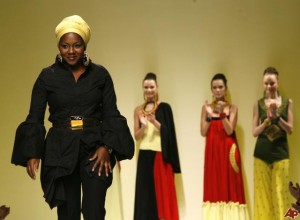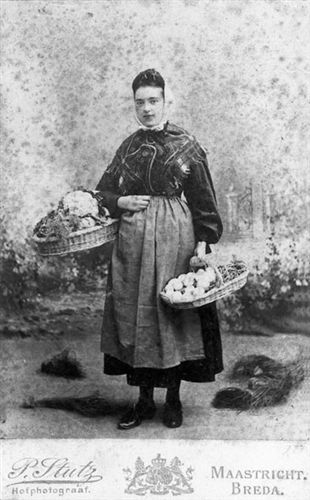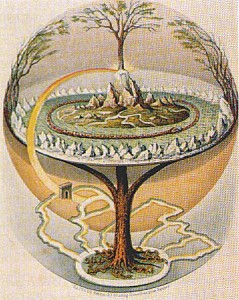![]()
Icons are images or representations, symbols linked to commands or signs that stand for its object by virtue of a resemblance to it. Classic icons in folklore are for example the tulips that form always an instant link in our minds to the Netherlands. A similar icon is the cross for Christianity or the peace-symbol for the hippies. What are the main icons of today’s folklore? Which symbols will in decades to come remind us of this time? In our day and age the borders between countries are becoming less eminent with globalization and through the Internet communication is becoming ever faster. To deal with this intercultural computer-based community we are all becoming a part of, icons are vital in order to simplify for us these machines and also to express emotion in a typed conversation. Computer icons and emoticons are designed icons with a history, they are very important to our time and they will continue to be the true icons of modern folklore.
"Folklore Project" Category
The Icons of Modern Folklore
Wednesday, October 14, 2009
Hoofddeksel geliefd bij gelovigen
Wednesday, October 14, 2009
(Headwear popular with believers)
Why do people, both men and women, cover their hair or head for religious purposes?
Do they all have the same reason? Why are the rules different for men and women and what does it mean that we all want to cover this part of our body that is in first appearance not the most intimate one?
And finally what do have the differences between religions, but even the differences within one religion, to do this?
Alexander van Slobbe
Wednesday, October 14, 2009
The Designer is necessary!
Looking at Alexander van Slobbe and the role of the designer as he sees it, the two most important words seem to be innovation and approach. The innovation of the designer, in the approach to the garments and silhouette’s of the line. It is here, according to van Slobbe, that you find the importance of the designer. “For to long fashion has embraced the ideology that all innovation comes off the street” says van Slobbe and “thin conception would render the designer unnecessary”. So what then does innovation mean in relation to fashion? Trying to contemplate this, using the light blue line of 1994 as a starting point, the answer must be to remember the difference between innovation and invention.
LACE
Wednesday, October 14, 2009
Lace, does it need a presentation?
The history or origin… it is antique but not really clear where it came from, used in many culture, with conotation, with meaning, with symbolism.
The different types… Needle Lace, Cutwork, Bobbin Lace, Tape Lace, Knotted Lace, Crocheted Lace or Machine Lace.
The intention… manually made visual decoration.
Many things can be said about it’s past but is it really that important?
Let’s focus on the influence of lace in our future.
Lace, as every one knows it, is used for clothing and accessories, in folklore or modern fashion design but that is not the only place where the lace is used. In present time its presents can be found in art, architecture or even in contemporary design.
The “Lace Fence”, developed by the Dutch design house Demakersvan, is one of the works that was influenced by classic lace. This fusion between the industrial metal fence and lace embroidery modifies and cultivates a different look to our environment. What it achieves is, hostility versus kindness, industrial versus craft.
FOLKLORE : folkeminder, folclore, pjódfrædi, folklor…..
Wednesday, October 7, 2009
The dictionary of cultural & cultural theory (Michael Payne, ’96) does not mention folklore but it does describe Folk culture. According to this dictionary folk culture is the culture of preindustrial (premarket, precommodity) communities. It was therefore taken to be organized around a number of characteristics: the oral transmission of songs, tales and history: aesthetic authorization by tradition, the integration of nature and culture, body and mind, expression through ritual in the collective deployment of symbols.
Folk is not an antropological term. It is an ideological construct; it necessarity includes a critique of ‘modern’ societies. As an aspect of nationalist ideology, folk culture is taken to be expressive of the true spirit of the nation, of it’s underlying beliefs and values, as articulated in specific forms of dress, speech, music, story telling, cookery and design.
The Idea of folk culture was taken up by Marxists, in the construction of working class consciousness (folk=serfs+peasants). Folk culture could be presented as the ‘pure’ form of working class culture untouched by the seductions of commerce.
A lot of comtemporary designers are inspired by this so called ‘pure’ form of working class culture. Remarkable designers worldwide (from Iceland to Denmark to Holland and Afghanistan) are interested in folklore, local crafts and methods. You will find this in the designs by ao Viktor & Rolf, Alexander van Slobbe and Claudy Jongstra, see a short documentary ‘Felt fabric and furniture’ where she shows the traditional techniques she’s working with: http://www.dutchprofiles.com/video/. This site also shows a film ‘African Beauty in Dutch design’ on the textile manufacturer Vlisco.
The most common idea of folk culture today is as a tourist attraction, a way of signaling what makes a country or locale different. But it’s definitely more then that. Folk culture is more then a kind of domesticated exotica, artificially preserved by the state. It seems to have noteworthy relations with design, its concepts, meaning and ideals.
The Dutch House Scene
Wednesday, October 7, 2009
The Netherlands is well known for its liberal thoughts and its sense of the ability of living a free life. I would like to go back to a period in time where I believe that this feeling of freedom started. Well, at least for me it started in this period. And after having seen 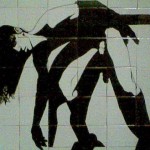 in the Zuiderzeemuseum some memories came back to me.
in the Zuiderzeemuseum some memories came back to me.
In the beginning of the 90s a new form of dancing and partying was developing worldwide: ‘The House scene’. The Netherlands, and especially Amsterdam, was an important spill in this scene. Clubs like ‘The Roxy’ and ‘The It’ were internationally well known and formed the basis of experimenting within all boundaries of partying. In these clubs it felt as if all things were possible and all different types of people were accepted. This also attracted many homosexuals from all over the world to come to Amsterdam. Which led to an extravagant gay scene that gave these dance parties a free and exceptional character.
(house scene back in the early 90’s filmed in The Roxy)
Until today many people try to redevelop the feeling we experienced back in the 90s by organising the same types of parties. Dressing up, drugs, gays, extravagant shows, and all other sorts of things are organised in order to recreate that great sense of freedom. In my opinion: ‘Dutch folklore that developed into a worldwide dance scene’.
Orange is ruined
Thursday, September 24, 2009
I saw an ingenious orange dress based on traditional dutch clothing. It was made of a deep orange heavy fabric and the hood was shaped like the head of a mouse. The dress was interesting and it made me think of the colour orange.
I have a tendency to avoid everything that is orange.
Van Oranje (orange) Nassau is the name of the Royal family and that made orange the national colour of the Netherlands. There is an anual tradition called Koninginnedag (queensday) which takes place on the birthday of a former queen: April 30th. The colour in which Amsterdam is covered that day of the year is, of course, orange. Repulsive objects such as blown up plastic hands, orange cowhats, clogs that one can float in on the canals. Drunk man and woman from the countryside walk around in orange t-shirts, skirts and pants with orange hats, boa’s, gloves, necklaces and wigs on. You name it, they wear it in orange. On this day orange donuts, cupcakes and pastries are eaten and faces have orange flags painted on them.
The screaming orange is everywhere. When there is a national soccer game the country turns orange again. On those days the average dutch person does nothing but jumping around, shouting and drinking beer. A lot of beer, and more jumping.
I always associate orange with this obnoxious folklore.
This is why wearing orange or having orange around is ruined for me.
It is why I like lemons more than oranges.
Schatten van Zeeland & Brabant
Wednesday, September 23, 2009
In de stad waar ik vandaan kom (Oosterhout) heb je veel oude kloosters en kerken, die veel historie hebben. Om deze oude gebouwen en vroegere verhalen niet verloren te laten gaan is er het culturele programma ‘schatten van Brabant’. Schatten van Brabant verbindt cultureel erfgoed samen met kunst. Ze proberen zo een heel nieuw cultureel aanbod te creëren. Het erfgoed zorgt voor de verhalen, en de inspiratie voor de mensen. Zo zijn er allerlei exposities in oude kloosters van mensen die geïnspireerd zijn door de oude verhalen en door de gebouwen.
Dit deed me denken aan de expositie in het Zuiderzee museum, hier laten ze je ook kennis maken met het oude verleden. Ze willen niet dat alle oude tradities verloren gaat, en door deze klederdracht zijn er hier ook heel veel nieuwe designers door geïnspireerd.
De oude klederdracht in het Zuiderzee museum heeft veel te maken met de oude klederdracht in Oosterhout.
De jurken van de vrouwen en de klederdracht van de mannen heb ik vaak terug gezien op schilderijen en oude ansichtkaarten. De exposities die tegenwoordig in de kloosters worden gegeven, laten ook veel van de oude rituelen en oude klederdracht terug zien in hun werken.
Toen ik in het Zuiderzee museum liep deed mij de expositie veel aan vroegere rituelen denken van Oosterhout.
Deze foto is voor een klooster in oosterhout gemaakt,
Daadwerkelijk
Thursday, September 17, 2009
Geen overbodige lekkerbekkerij, maar inhouden tot speciale aangelegenheden, één hand voor jezelf en de ander voor de boot, beter één vogel in de hand dan tien in de lucht, verbeelde uitspraken die ik in Enkhuizen herkende uit mijn eigen folklore-vocabulaire.
De flexibiliteit die gebruikt werd tijdens het maken van de werken sloot aan op wat de omgeving te bieden had. Het naar je eigen omgeving kijken om daar vervolgens mee te werken is een belangrijk deel van de Nederlandse nuchterheid en inventiviteit. Ook de doorgedraaide versie is te vinden in de huidige cultuur namelijk de kunst van het bedwingen/aanpassen van je omgeving. De Nederlandse dubbelheid tussen het openstaan voor je omgeving om het daarna weer eigen te maken en omgedraaid is eigenschap waarom Nederlandse ontwerpen en het eigenzinnige karakter bekent staan. Door dingen te laten zijn voor wat ze zijn, maar door ze op een andere wijze te benaderen of hergebruiken kan zowel worden behouden als verrijkt.
Van vrijheidstrijder naar modepop.
Wednesday, September 16, 2009
De Arafat-sjaal wordt sinds 2001 gedragen door vele modebewuste burgers in Nederland, Raf Simons kwam hiermee voor de dag op de catwalk.
Deze sjaal vind zijn folklore in Palestina waar boeren zich met deze sjaal beschermden tegen zand en zon en zich zo ook onderscheiden van de hogere klasse.
Deze sjaal staat nu vooral bekend als de Arafat sjaal en als symbool voor de Palestijnse vrijheid strijders die in conflict zijn met de joden. Een drager van deze sjaal laat dan ook vaak onbewust zijn solidariteit uit naar de Palestijnse vrijheidsstrijders.
Zo is er van een eeuwenoude traditionele sjaal met een duidelijke pro Palestijnse boodschap een modieus westers kledingstuk gemaakt.
De meeste dragers van deze sjaal weten vaak ook niet waar deze voor staat, en dragen hem omdat ze hem mooi en lekker warm vinden.
Zo loop je als modepop met je mooie sjaal zonder dat je het door hebt als pro Palestijnse vrijheidstrijder.
The Law of Jante (Janteloven)
Wednesday, September 16, 2009
You shall not think that you are special
You shall not think that you are of the same standing as us
You shall not think that you are wiser than us
Don’t fancy yourself as being better than us
You shall not think that you know more than us
You shall not think that you are more (important) than us
You shall not think that you are good at anything
You shall not laugh at us
You shall not think that anyone cares about you
You shall not think that you can teach us anything
This concept was created by the Danish author Aksel Sandemose, in a novel from 1933. In this novel he is describing the mentality of the Danish people as he observes it, and the core of this mentality is described in the law of Jante. There are Ten Commandments which makes a reference to the authority of the Ten Commandments of the bible. “The Law of Jante” is part of the ironical self-concept of the Danish people and is an expression for the collective pressure on, and limitation of the individual. In spite of the fact that “The Law of Jant” has become a big part of the Danish mentality, culture and folklore, most Danish people hate this concept.
Folklore is a tool of emotion
Wednesday, September 16, 2009
Folklore is a way of saying that you’re the same. That you’re equal. People do the same things and were the same cloths as soon as they ‘belong’ to one an other. They ‘belong’ to a group and for that group there is a symbol, and that symbol is they’re clothing. Just like in the old days these symbols still exist and everyone has they’re own. The only big difference is that the groups have become smaller and the individual more important. But the essential rule of this behavior remains the same; love and affection for one another. It’s a way of saying this to you’re friends and family and group members without having to say it. You just do, wair, eat, see, feel, touch, smell and maybe even think the same things, and while doing this you subliminally say that you’re a friend of your neighbor.
“La vai Lisboa”
Wednesday, September 16, 2009
Folklore in Portugal is an Artistic Manifestation that really influenced portugese society.
Since genarations ago until the present days people still doing the Folklore Parade, during these celebration everybody in the country goes to the street to become part of this show. Here everybody can see the costumes, the sybolic objects, the music, food, drinks, villages party’s.
I found a connection between the folklore from Portugal and from The Netherlands because they both developed embroidering techniques in women dresses. These dresses are worked by hand so everything is embroidered carefully in a really illustrative way. We can notice that similarity in both cultures, through the shapes, drawings, the geometric forms, waves, spots, flowers, leaves and hearts. All the colours are always really strong, red, blue, beige, yellows, black and green and the background colour white or black, depending of the social women’s situation.
Most of these women use the folklore to express themselves with their own dress, for each costume they have a different meaning and a really particular taste. Most of the time these costumes are based on social habits, the agriculture, family, society and politics, which caused these embroided dresses to become a piece of history.
Het Mooswief
Tuesday, September 15, 2009
Folklore, traditionele gebruiken, leven ze nog?? Tradities veranderen vaak in herinneringen, die dan weer als inspiratiebron kunnen dienen voor kunstenaars, zoals we konden zien in het Zuiderzee museum. Jonge kunstenaars blazen de traditionele klederdracht een nieuw leven in. Zo laten we ons verbazen door voorwerpen die vroeger tot de orde van de dag behoorden. Mijn folklore ligt in het zuiden, in een kleine stad genaamd Maastricht. Het Mooswief, wat vrouwtje van de markt betekend, is zo’n herinnering die weer tot leven kwam. Ze stond altijd symbool voor de plattelands vrouwen die naar de stad trokken om hun producten op de markt de verkopen, maar sins enkele jaren is er een enorme papiermarche pop van haar gemaakt waarmee jaarlijks de ‘Vasteloavend’ wordt ingeluid. Tijdens carnaval hangt ze dan boven het vrijthof waar ze neerkijkt op alle mensen die carnaval komen vieren.
Behoort folklore tot de geschiedenis of is iets enkel folklore als het nog steeds leeft? Carnaval leeft, dat is zeker. Het hele zuiden kijkt er maandenlang naar uit. Verenigingen worden bij elkaar getrommeld, moeders worden ingezet om kostuums te naaien en enorme hoeveelheden bier worden door café eigenaren binnengesleept. Voor enkele dagen wordt de hele binnenstad omgetoverd tot een andere wereld, een wereld vol felle kleuren en fantasiefiguren. Het verbaasd mij elk jaar weer wat het effect van carnaval is op mensen. Alles mag en kan op eens, zo wordt er in elk geval gedacht. Drie dagen lijkt de wereld op z’n kop te staan, maar daarna is alles weer zoals het was. Het papier op straat en de bergen met glasscherven zijn het enige bewijs voor de losbandigheid die een paar uur geleden nog normaal leek te zijn. Een ochtend later gaat iedereen gewoon weer naar z’n werk, de duivel van gisteravond moet weer terug naar zijn advocatenkantoor en Zorro moet weer broodjes bakken in de bakkerij.
Tree of Life
Monday, September 14, 2009
A braid (also called plait) is a complex structure or pattern formed by intertwining three or more strands of flexible material such as textile fibers, wire, or human hair. Compared to the process of weaving a wide sheet of cloth from two separate, perpendicular groups of strands (warp and weft), a braid is usually long and narrow, with each component strand functionally equivalent in zigzagging forward through the overlapping mass of the others.
Hairflowers and memory boards were manufactured in denmark, by a special branch of braidingteknik (which otherwise was used for wigmaking). There were manufactured various types of “tree’s of life” or bouquets, to which different family members had provided hair. Often family members’ names were stamped on the background of just the flower or branch, which was produced by just their hair, soo the work simultaneously came to form a kind family tree.
